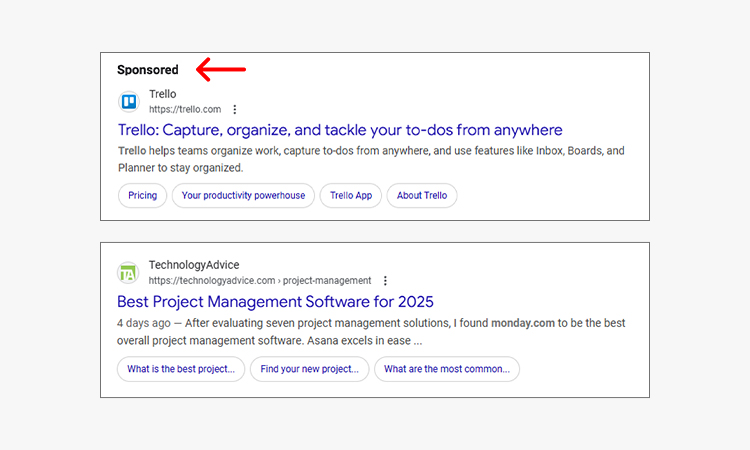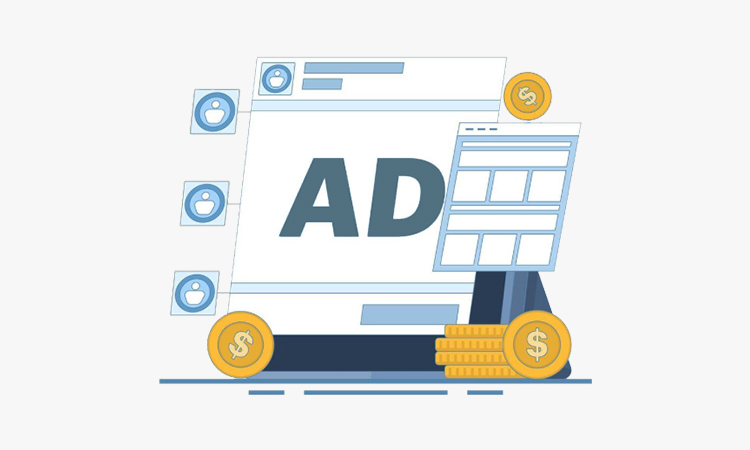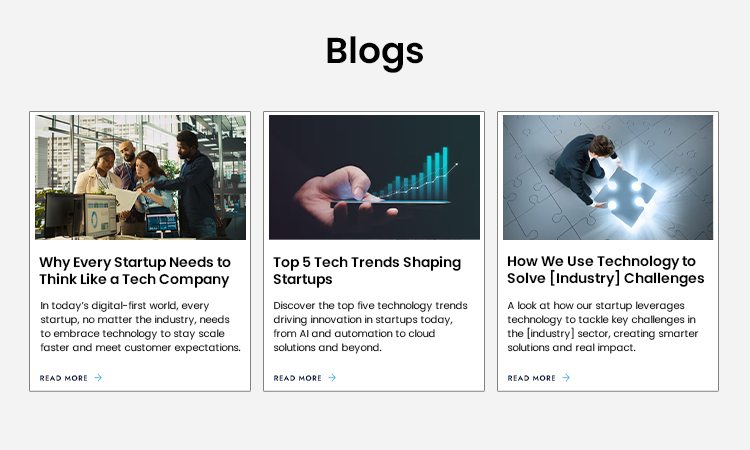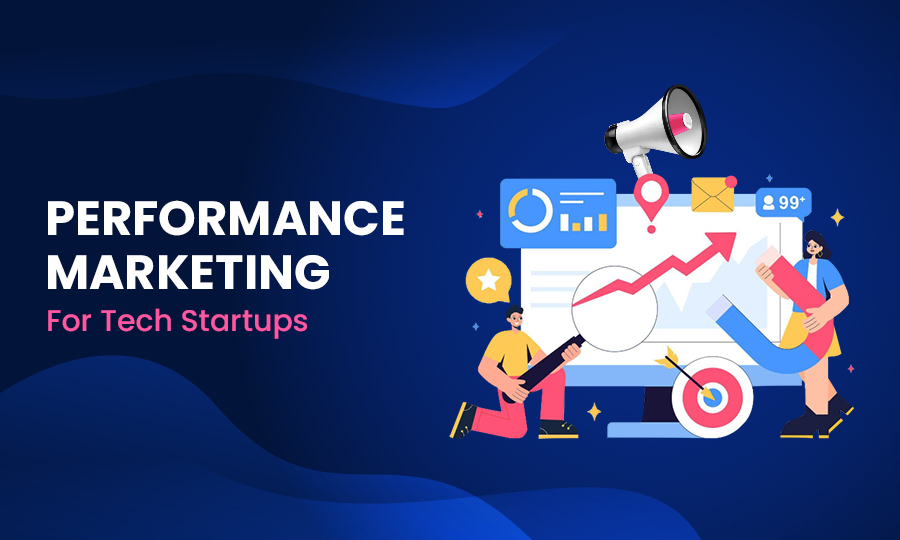Since the COVID-19 pandemic, a large audience has been spending more time on their mobile phones and desktops; since then, performance marketing has become more competitive. It is all dreamy till reality hits. According to data, the failure rate of start-ups is 90% and 10 % of them fail within a year. When an individual starts a startup, they aim to bring tech products and tech-related services to the market, aiming to become a successful business. In this, we will learn about the role of performance marketing for a tech startup to boost sales.
What Is Performance Marketing?
Performance marketing is a results-oriented strategy where businesses compensate based on achieving targeted goals instead of broad visibility. Unlike traditional marketing, which emphasises visibility and reach, performance marketing focuses on direct actions such as clicks, leads, or conversions.
In simple terms, eRM’s performance marketing is a digital marketing strategy where tech startups pay marketing agencies and platforms to promote their brands, products, and services, helping them reach potential customers and grow their business.
The Difference Between Traditional Marketing Methods and Performance Marketing
| Factors | Performance marketing Methods | Performance Marketing Methods |
| Performance Marketing Methods | It can track specific actions, such as real-time data, conversion, and clicks, to measure the effectiveness of the ad campaigns | It is unable to track actions; it mostly depends on estimated impressions. |
| Cost | The pricing depends on PPC, CPA, CPL, and so on. | As it has no direct link to the performance, the cost structure is fixed |
Target marketing capability | It targets the audience based on demographics, interests, behaviour, and user intent. | Though it targets a mass audience, its precision is limited. |
Scalability | Its scalability can be controlled on demand and on budget | Its scalability is limited and expensive |
Site speed | Site speed is crucial as the ad performance depends on it | As the planning is lengthy reason why the speed of results for marketing campaigns is slow |
| Optimization | Campaigns can be adjusted according to the performance | Once the ads are placed, they limit the ability to modify or change them |
| Ad placement control | To maximise the ROAS, businesses can test and adjust the ad placements | There is no chance of flexibility as the ads are locked to their authorised slots |
| Platform | Its advertising platforms are social media channels, Google Ads, and Meta Ads | Traditional advertising platforms include offline media, TV, newspapers, and so on |
Performance Marketing Channel for Tech Startups
Before we learn about the various channels of performance marketing, we first need to understand what performance marketing channels are. In simple words, performance marketing channels are promotional platforms for the brands where they pay based on specific measurable actions like generating leads, number of clicks, and sales.
The Most Common Performance Marketing Channels:
- Search Engine Marketing – Search engine marketing strategy focuses on paid advertisement to increase the visibility of your website on SERP. Biding on the keywords that are used by the consumers on a large level is a part of the search engine marketing strategy. It operates on a pay-per-click strategy, which means the adviser will pay based on the clicks the ad generates.

This will help you in targeting the audience based on keywords, demographics, and geographical location. It has a high success rate in driving immediate traffic to your website and increases the leads and sales so that you can achieve growth.
- Social Media Marketing – Social media marketing is when you use various social media platforms like Facebook, Instagram, and X to promote your business. According to a survey, Facebook is used by 83% social media marketers, Instagram has some 78% active marketers, and 27% marketers use X for brand promotion to increase their brand visibility to a large audience.

Social media marketing is a great way for audience targeting. It provides you with a platform to create and place ads according to the demographic, geographical location, interests, and behaviour.
Social media marketing aims to increase brand awareness, attract genuine traffic, generate leads, and, of course, boost sales.
Social media advertising offers several formats to promote your brand with more versatility and engage with the target audience effectively.
- Image ads
- Video ads
- Carousal ads
- Sponsored ads
- Affiliate Marketing Strategy – Affiliate marketing strategy is when a third party is involved to generate sales for a brand and gets paid for each sale. It is a performance-based marketing strategy where the affiliates promote products or services using unique affiliate links provided by your business to share through their content.
For example, a YouTube tech reviewer links to gadgets in their video descriptions. When a viewer clicks on one of those affiliate links and makes a purchase or books a product, the YouTuber earns a commission from the sale price.

It’s a win-win situation:
- The brand or seller gets exposure to a wider audience through the YouTuber’s channel.
- The YouTuber (affiliate) earns passive income by leveraging their content and audience without having to create or sell the product directly.
- Email marketing – Email marketing is one of the most effective marketing channels. The professional marketers also rely on an email marketing strategy. Many business owners spend 7.8% of their total marketing budget on email marketing.

This strategy involves sending direct mail to a targeted group of subscribers/consumers. The primary goal of this marketing strategy is to build a firm relationship with the customers, promote products and services, share news and updates related to the company, and, of course, to drive sales.
Email marketing campaigns can range from –
- Promotional newsletter
- Product announcement
- Personalized offers
- Automated drip campaign
- Transactional
- Re-engagement
The only way email marketing will be effective is if you deliver the right content to the right audience at the right time. This is the best way to increase engagement and gain loyal customers. This is a very powerful tool to communicate with your audience to achieve marketing goals.
- Display and native advertising – Display advertising is placing your banners, ads, and images of your business, whereas native marketing lets your advertisement blend with the surroundings. Both of them are extremely impressive digital marketing tools.

The display advertisement goal is to gain attention, increase brand awareness, clicks, and conversions. On the other native advertising aims to deliver valuable content along with business promotion. It aims to provide a good user experience.
- Influencer marketing – Influencer marketing strategy is when you leverage the reach of an individual who has a solid followers base on social media platforms. The more followers are, the more authority that individual has among followers. Most of these influencers are either experts or are in a reputable position in certain professions. They collaborate with brands and provide the brands with a large number of consumers.

But this marketing strategy mostly depends on the online reputation of that specific person and their popularity. These factors matter a lot to drive brand awareness, consumer engagement, and conversion rates. Influencer marketing has many forms, like sponsored posts, product reviews, giveaways, and brand endorsements. This way, the brands are making sure the consumer develops a sense of trust for their brand as it is promoted by the person whom they look up to.
- Content marketing – This strategic marketing approach is used to drive customer engagement by creating valuable content for the audience. Contents such as informative blog posts, articles, videos, infographics, and ebooks are various forms of content marketing. It aims to gain the audience’s trust and establish authority in the industry by providing valuable and informative content to its audience.

See, when the audiences notice that your content addresses their needs, that’s what makes them interested in it. It drives customer engagement and nurtures customer loyalty over time.
- Video marketing – It is a strategy that promotes comprehensive services, products, and brands with the help of video content. It is highly effective in capturing the audience’s attention and conveying the message to them for improved engagement. This marketing involves promotion via different forms of video content, like unboxing videos, review videos, live streams, and testimonials.

These contents are highly versatile, which makes them easy to optimise for various platforms and audiences. It is easy to reach a larger pool of consumers and help the brand to spread awareness, educate them.
- Programmatic advertising – This advertising method is one of the least used strategies. In this, the brands buy and optimise ad time placement through an auction. A set of advanced algorithms and software enables it to purchase ad space across various websites, social media platforms, and apps.
It uses data-driven insights and targeting parameters to reach the audience effectively. The traditional marketing methods involve humans doing all the work.
- Mobile marketing – This marketing strategy is the backbone of other marketing efforts that include tactics like social media marketing, SMS campaigns, email marketing, mobile app ads, and so on. This strategy aims to reach potential consumers by appearing on their smartphones and tablets.

Key Metrics to Measure Performance Marketing
For a successful outcome of performance marketing, regular measurement is mandatory. You will be able to understand the effectiveness of your ad campaigns and pinpoint the areas that need improvement. It helps you to understand the effect of your performance marketing tactics by tracking your campaign performance. It also provides valuable insights into your audience’s behavior and preferences, allowing you to optimise for better conversion rates and ROI.
There are many ways you can measure our performance marketing; those are
- Dwelling time – It is a key component to measure performance marketing. It is the time a user spends on your website. Higher dwelling time refers to the page’s content quality and its relevance to the user’s intent. It also points out the better-performing sections of your website and the underperforming parts that need to be optimised.
- Attention – It is a newly introduced metric for marketers. It is advanced enough to understand the effectiveness of ad campaigns. It provides you with accurate data on the time spent on the page. It surpasses the common KPIs such as page views and time spent on site, and gives you a clear image of whether the ad was able to capture the genuine attention of the user.
- Return on Investment – Return on investment is what helps you to understand the success of your marketing campaign. This measurement shows the money you have made on each dollar spent by you in the ad campaigns. It compares the gains against the costs.
Conversion Rate –Conversion rates indicate the success rate and effectiveness of ad campaigns. A higher conversion rate means the content is aligning with the user intent. - Customer Lifetime Value – This signals the value of a customer throughout their relationship with the business. This metric helps you in customer acquisition and retention by giving importance to long-term gains instead of immediate profit. This indicates the effectiveness of your client retention strategies.
- Click-through Rate – In digital marketing, it measures how often users click on your ads after seeing them. A high CTR indicates that your ad placement, design, and messaging are compelling enough to drive user interest and interaction. It’s a direct reflection of how well your campaign resonates with your target audience.
- Cost Per Lead – Similar to other metrics, CPL helps you evaluate the cost-effectiveness of your campaigns. In CPL, it will be easy for you to allocate your budget to the most profitable marketing campaigns. It also highlights areas in your funnel or messaging that may need adjustment for better results.
- Return on Ad Spend – It measures the amount of return you have made on your investment in the ad campaigns. This helps the marketers make informed decisions on allocating budget for ad campaigns, ad placement, and so on.
What Are the Key Benefits of Using Performance Marketing for Your Tech Start-Up?
For a tech start-up, performance marketing can be beneficial in many ways, like giving their business exposure to a vast crowd of potential customers. It also gives your business several other benefits, like
- Measurable outcomes – Performance marketing’s key benefit lies in its ability to monitor and evaluate ad and marketing campaigns. The real-time data enables you to understand the outcomes, so that you can make necessary adjustments on time to improve your strategies and return on investment. In short, performance marketing gives you an exact result about your marketing campaigns.
- Accurate targeting – Another major benefit of performance marketing for startups is precise audience targeting. With the help of analytics and data insights, startups can identify the behavioural patterns, interests, and demographics of customers. It helps you to hit the mark accurately by reaching the right audience and increasing the chances of success.
- Data-driven decision making – Startups can stop shooting arrows in the dark and take more accurate decisions about focusing on strategies that deliver a result. As it grants you access to performance metrics. When you start making decisions according to data analytics, you will be able to refine your strategies and improve search engine rankings.
- Lower financial risk – Unlike traditional marketing methods, where you had to invest without any guarantee of return. Performance marketing continues to deliver profit when you implement marketing strategies based on it. This is beneficial for a start-up as it helps you to allocate funds according to the performance of the ad campaigns.
- Speed – It provides you with real-time data, and with its help, you can make quick adjustments, enabling your campaigns to move quickly towards quicker results, like leads and sales. The ideal way to achieve speed in social marketing is you focus on a measurable audience.
- Efficiency – Performance marketing uses performance-based models where you only have to pay for specific measurable actions, which technically enhances efficiency by focusing on the results that deliver the return on investment
- Budget management – As a start-up, you should always begin by investing smaller amounts, analysing the results, and increasing spending on campaigns that perform well. This helps avoid wasting budget on underperforming campaigns. You can also leverage performance marketing services to optimise your campaigns and maximise ROI.
- Choosing the right platform – Selecting the right platform for a successful marketing campaign is also crucial. Online advertisement platforms like Google Ads, Facebook Ads, influencer marketing, and other sources to promote your brand, product, and services can generate a large amount of traffic that is actually interested in taking action.
Mistakes To Avoid for Tech Start-Ups
Performance marketing can really help your social marketing efforts to achieve its expected goals, but if not utilised to its full potential or ignored over time, then it can damage the company’s growth. Here is a list of common mistakes that one should avoid in performance marketing
- Overlooking data analytics – As a tech start-up company, you can not afford to ignore data analytics. Ignoring it will potentially lead you to ineffective campaigns. Regular review of the performance metrics helps you to make sure that the campaign remains agile to adapt to new trends.
- Fast scaling – Performance marketing enables you to scale the performance of your campaigns quickly. But if you make a decision too quickly without making any thorough research on the data, you will end up making ineffective decisions.
- Ignoring brand awareness – Performance marketing aims towards measurable results. Along with that start start-ups should also focus on building brand awareness through social media promotion and other ways; ignoring brand awareness will lead to a lower conversion rate.
Conclusion
To wrap this up, we can say that the tech start-up market is really competitive in today’s time, and it is very hard to survive as most of the tech companies that have just started their business tend to fall flat.’ This blog contains all the information that you need when you want your business not just to survive but also to thrive. You can adapt performance marketing tactics. This blog can help you attract organic traffic, help you control your marketing budget, and expand your marketing reach.

